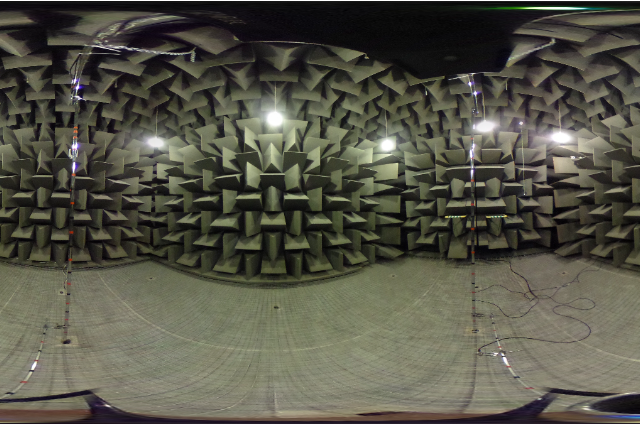
Physics is the natural science that studies matter, energy, space, and time to understand the fundamental laws of the universe. It examines how these components interact, including their motion, behavior, and forces, to explain how the universe works from the smallest particles to the largest cosmic structures.
Silence is a term we tend to take for granted. We imagine a quiet library or a distant forest as being silent. In these environments, however, silence is nothing more than the lack of apparent noise. Right, absolute silence—the total lack of perceptible sound—is a physical condition that is virtually impossible to locate in the natural environment. It is so artificial and disconcerting that it can be a deeply psychological experience. This condition can be created in a specially designed room, an anechoic chamber, a room that is not only quiet, but deliberately designed to eradicate sound itself by the pitiless application of physics.
The purpose of an anechoic chamber is to remove two inherent characteristics of sound: reflection and reverberation. In any typical room, when you utter something or make a sound, the sound waves radiate out from where the sound comes from and reflect off the hard, flat surfaces—walls, floor, and ceiling. These reflections that reach your ears a fraction of a second after the direct sound cause reverberation, which is responsible for imparting a room with its characteristic acoustic flavor. In an anechoic room, there are no reflections. The ceiling, floor, and walls are lined with huge, projecting wedges of a heavy, porous sound-deadening material, usually fiberglass or foam. The wedges aren't an arbitrary choice; they're an essential element of the physics. When a sound wave hits a flat surface, it rebounds straight back. But when it encounters the sloping face of a wedge, it enters the porous material. As the sound wave penetrates further into the constricting wedge, it is dispersed into infinitesimal amounts of heat by friction, until the wave is fully absorbed and has nothing left to bounce back.
The effect is a room that is acoustically "dead." Without reflections, there is no room for sound to live. A clap of the hand doesn't ring or echo; it is a stunningly short, dry "thwack" that disappears the moment it is made. It sounds like the noise is being vacuumed out of the air. The room is also cut off from the outside environment, suspended on enormous springs that take vibrational energy, and housed in heavy, dense walls that keep outside noise from penetrating. This pairing of isolation and internal absorption makes it an environment that has the Guinness World Record for the quietest place on earth, with background noise levels at a staggering -20.35 decibels, well below human hearing ability.
The experience of being within such a chamber is notoriously disorienting and intense. Without any external sound to orient yourself by, your perception turns inward. You are sharply attuned to the noises of your own body, noises normally drowned out by background sounds. The flow of blood in your ears becomes a deafening torrent. You hear the high-pitched whine of your nervous system, the creak of your joints, and the sound of your own breathing and swallowing. For most people, this deprivation of the senses is deeply disturbing. The brain, deprived of its normal auditory stimulation, can become disoriented, resulting in dizziness, loss of balance (since your ears are central to balance), and even hallucinations. The experience is one of discovery: that silence is not nothing, but a painting upon which the internal cacophony of our own biology is cast.
Their main function is not philosophic inquiry, but intense scientific and industrial testing. They are crucial to acoustics research, enabling researchers to determine the precise sound output of a device—such as a speaker or microphone—free from room reflection contamination. They are used by car manufacturers to identify the source of small rattles in a car. They are employed to test domestic appliances for noise levels and to make more effective hearing aids. Inside the room, the engineers are able to experience the clean, unadulterated sound of their product, which allows for a kind of precision that is not possible anywhere else.
Physically, the anechoic chamber instructs us that silence is not a matter of passive absence but an active condition of cancellation and absorption. It is a fight against the natural propensity of sound to spread and reflect. Psychologically, it is instructing us that our perception of reality is constructed on an ongoing, diffuse flow of sensory input. When that flow is severed, the relationship of our mind to our body and to our world becomes alien and foreign. The room is a perception lab, demonstrating that silence does not exist, but is constructed, and that in its deeper hollowness, we have to hear the one thing we generally attempt to suppress: ourselves.
